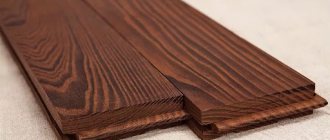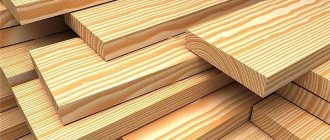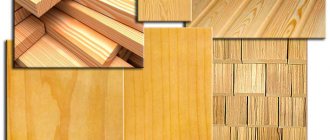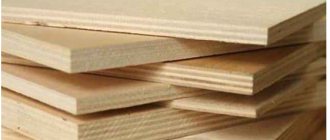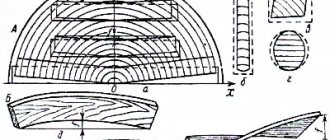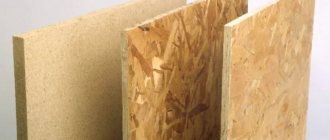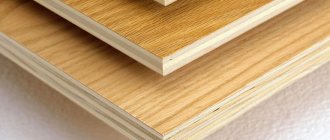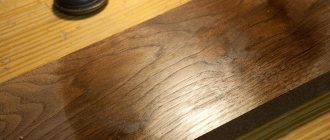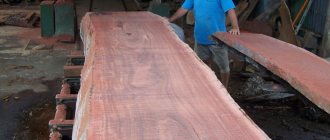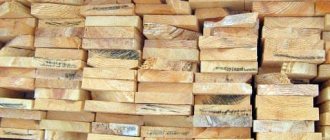There are a lot of offers on the market of construction and finishing materials for every taste, color, budget and area of application. If a person does not want to save money, but plans to make repairs once and forget, then you need to select durable and wear-resistant materials.
One of these is thermowood. Therefore, today we’ll talk about its features, the technological cycle of transforming a workpiece into a product, as well as its advantages and scope of application.
Sit back, it will be interesting.
What is thermotree
Wood has always been a popular material for construction and renovation. Man has been tarring logs for a long time, soaking them and burning them, but the scientific approach was lacking. But in the middle of the last century, a number of European scientists (Stamm, Hansen, Kollman, Schneider) created a “hardened tree” (as they called it). The essence of hardening was to treat the board at high temperatures under pressure in a sealed container. Oxygen was not supplied there to prevent the possibility of fire.
Thermal lining made of thermal aspen in two shades from Dobry Les
Different types of wood are used as blanks (pine, aspen, ash, birch), each of which differs in natural characteristics and appearance. For flooring, for example, thermo-ash is perfect due to its increased wear resistance. Thermo birch or thermo aspen are suitable for wall decoration.
How to make heat-treated wood at home yourself?
Buying thermally treated wood is not difficult, for example, buy in St. Petersburg or buy in Moscow; it is now sold everywhere. But usually only in specialized stores. Only the cost is much higher than for ordinary wood. Therefore, many craftsmen often ask this question - how can you make such wood with your own hands at home?
If you really want to do this, it is possible. Only the process of making thermowood is very labor-intensive, but the result is worth it.
To make a thermal chamber we will need the following elements:
A container of water is placed in the thermowood chamber to allow water to evaporate due to the high temperature. This will prevent the wood from catching fire. To maintain a high temperature, the chamber must be well heated.
IMPORTANT! The chamber must be sealed tightly, because if oxygen gets in there, there is a risk of wood fire.
This option is suitable if you need to process large-sized wooden products. For processing small pieces of wood, there is another way to do it yourself. Take wood, boil it for 1.5 hours, then wrap it in rags or paper and dry these wooden products near a stove, radiator or heater.
Heat treatment technology
There are German and American wood heat treatment technologies on the market, but Finnish ones have become more widespread. We described its essence above.
Technological cycle:
- The workpiece is placed in a sealed container.
- It is supplied with high temperatures at constant pressure (single-stage). If water vapor is also pumped into the container, then this is a multi-stage treatment. In some cases, instead of steam, inert gas is supplied at a pressure of 1.6 Bar.
- Excess moisture and polysaccharides, which stimulate wood rotting, are removed from wood fibers.
- Upon completion of the procedure, the temperature is normalized and the board cools down.
All stages of thermal board production are shown in this video:
The result is an external resemblance to wood, but in terms of mechanical, physical and aesthetic parameters it is a completely different material. At the dawn of heat treatment of wood, chemical reagents were used to enhance the properties of the workpieces. Scientists succeeded, but under UV rays substances harmful to humans were released. Therefore, nothing but steam is currently used.
By adjusting the temperature regime, you can control the quality of the board and its appearance. There are three classes of thermowood:
- The first is that temperatures up to 190 ℃ easily change the natural shade of the workpiece; the improvement in properties is also minimal.
- Secondly, temperatures up to 210 ℃ increase the strength and resistance of the material to rotting; it acquires a darker shade.
- Third - temperatures up to 240 ℃ maximize the density, strength and hardness of wood fibers, the shade becomes dark and rich.
The shade of the thermowood is the same throughout the entire depth of the board
At the same time, the shade of the wood is even throughout the entire depth of the board. If the top layer wears off over time, simple sanding will return the flooring to its original appearance.
Advantages (properties) of heat-treated boards
- Resistance to the environment - the structure of the wood becomes denser and the fibers stop absorbing water. If the board is left in water for a long time, it will accumulate no more than 8% water by weight. Thermal wood tolerates rain, snow and fog calmly.
- Resistance to pests – insects and microorganisms are not interested in thermal boards.
- Dimensional stability - over time, simple lining can become deformed, that is, crack or dry out, play. Thermowood has no such drawback.
- Strength – even naturally soft wood species after heat treatment become more durable and resistant to mechanical stress. There are no dents or scratches left on the surface of modified boards.
- Safety - thermowood is low flammable, and under UV rays it does not emit chemicals harmful to humans.
- Attractive appearance - due to heat treatment, the wood grain looks clearer, the shade of the boards becomes more uniform and rich.
- Durability - due to the absence of monosaccharides, thermowood does not rot and is not of interest to pests. The service life after treatment is 35-50 years.
Types of thermowood
Thermowood: what is it and how is it produced?
The process of making thermal wood is quite simple - essentially it is subjected to prolonged exposure to temperature, causing it to become hollow. In the sense that the cellulose in it partially burns out, all the existing resins come out and the structure of the fibers themselves changes - the tree is, as it were, caramelized, due to which it acquires very high performance, which is why it is valued. Heat treatment of wood can be done in four different ways.
What is the result of all these types of processing? What properties are given to it in this way? But we will deal with this point further.
Application area
Thermowood is a universal material for the construction of external structures, façade cladding, interior work, and landscaping of local areas. Let's consider each option in more detail.
Thermal board facade
This is heat-treated planken, imitation timber or lining. The facade lined with them does not require maintenance during operation, looks attractive, and does not dry out over time, the presence of rot is excluded.
Facade made of imitation thermo-ash timber
Terraces, verandas and gazebos
Thermal board is resistant to precipitation and microorganisms, temperature changes, which is especially noticeable for unheated buildings outside. If this is a floor covering, then the boards will not dry out and will not move. There is also no need to seal and repaint the floor every season.
Thermal aspen decking board
Wet areas
Thermal wood does not heat up in baths, saunas and bathrooms due to its low thermal conductivity, so shelves made from thermal boards will not burn the skin. Resistance to moisture and high air humidity significantly extends the service life of heat-treated boards.
Shelves and lining for a steam room made of thermoaspen from
Garden paths made of thermowood
Paths in the local area speed up movement, make it more convenient and functional, and also improve aesthetics. Thermowood is not afraid of increased loads and pressure, precipitation and moisture, and temperature changes. The environmental friendliness of the technological process prevents the release of chemical compounds under the rays of the Sun.
Thermal aspen garden path
Caring for thermowood
During its service life, thermowood remains resistant to moisture, temperature changes, pests, and aggressive environments, but UV rays are noticeable for boards. Under their influence, the top layer of the boards fades and turns gray. Over a year, under UV rays, the board fades by 0.05-0.1 mm, while the structure remains the same, as well as the strength characteristics.
The first option is periodic sanding, since the inside of the board has the same shade as on the front side. However, it will not be possible to endlessly chip away the top layer, so it is easier to use natural protective teak oil intended for thermal boards.
BIOFA teak oil is well suited for protecting thermal boards from UV
The composition of natural ingredients is applied with a brush to the front side of the thermal board along the fibers. The first layer is applied with teak oil, the second - the composition for operating conditions (for external or internal work). The frequency of painting depends on the operating conditions and the amount of sun hitting the board.
The composition does not form a protective film on the surface of the thermowood, which will wear out or crack over time; on the contrary, it is absorbed into the board and protects it.
It is no secret that many experts consider wood to be an outdated material, which is in many ways inferior to synthetic products. Non-natural materials are superior to wood in many respects, and are often chosen by consumers as the most durable finishing materials. But, given the pleasant aroma and environmental safety, it should be noted that not a single synthetic material has been able to completely displace wood from the finishing materials market. On the contrary, experts have made a lot of efforts to strengthen the position of wood in the construction market.
Content
- What is thermowood? Thermal wood production video
- Innovative developments and biochemical manipulations
- Operating parameters of thermowood. Advantages and disadvantages
- Application of thermally modified wood video
What is thermotree? Thermowood production
To improve the characteristics of wooden materials, manufacturers had to resort to the influence of physical thermal factors, which, in accordance with new innovative developments, should have significantly increased the resistance of wood to damaging agents. This assumption was confirmed, and thermally modified wood soon became a model of innovative technological processes, gaining one of the top positions in the consumer market.
So, more about thermowood. What it is? The raw materials for thermowood are ordinary wood species that have undergone a thermal treatment process, the essence of which is the production impact of high temperatures on known wood species.
Speaking about thermowood, the production of which is by no means know-how, it should be noted that the technology for its production consists of stepwise heating of wood to 210 degrees under constant pressure. This process is called hydrothermal treatment and involves three constant components: high temperatures, wood and water.
Innovative developments and biochemical manipulations
Previously, wood was treated with chemicals that protected the material from the damaging effects of mold and rot. But this option implies the possibility of certain harm to the body caused by chemical reagents. Innovative technologies have long moved forward, and developers have proposed a new way to modify a material so common in construction.
The structural composition of wood includes cellulose and hemicellulose, biochemical manipulation of which is the basis for the production of thermally modified wood. During the manufacturing process of thermowood, the technology of which involves biochemical changes in the structure of wood, hemicellulose decomposes, while the molecular structure of cellulose remains constant. This is the main way to improve the performance of previously unstable wood. Less importance in this process is given to the evaporation of wood extractives, as well as reactive components that are exposed to chemical action.
Operating parameters of thermowood. Advantages and disadvantages
Despite the fact that thermowood is an absolutely environmentally friendly material and is produced without the use of chemicals, in many respects it is significantly superior to most finishing materials. Basic ideas about the benefits of thermally modified wood can be obtained by familiarizing yourself with the following characteristics:
1. Resistance to rotting and the damaging effects of mold;
2. Preservation of geometric configurations under conditions of temperature and humidity changes;
3. Reduced hygroscopicity and thermal insulation properties, which is due to the reduced ability of the treated wood to absorb moisture, which significantly reduces the risk of corrosion processes and rotting;
4. Stability of humidity parameters remaining at 5%;
5. Innovative technologies, implying the possibility of obtaining a varied tint palette, including both light and dark shades, preserved throughout the entire depth of the material;
6. Possibility of processing low-quality raw materials, which after modification acquires the appearance and performance characteristics of expensive wood species;
7.Correlation of strength and density levels. The technological process of manufacturing a thermally modified version of wood implies a slight decrease in strength, however, the ratio of density and strength characteristics does not change.
When choosing thermally modified wood, you need to carefully familiarize yourself with its advantages and disadvantages, which thoroughly characterize the material from an operational and aesthetic point of view. And if the advantages are described in detail above, then it is still worth saying a few words about the disadvantages.
Firstly, treated wood is characterized by lower strength, which makes it more fragile, unlike raw wood. And, secondly, thermowood is characterized by a low level of humidity, which causes poor-quality gluing, to avoid which it is recommended to use polyurethane glue.
Application of thermally modified wood
The unique mechanical and physical properties contribute to the use of thermally modified wood in those sectors of construction where the use of untreated wood is excluded. Thus, the use of thermal wood is successfully practiced in finishing saunas and baths, yacht interiors, and also as a decking board.
The use of modified wood in traditional construction activities is not prohibited: as materials imitating logs and timber, for the design of areas and structures, for the manufacture of furniture, stairs and fences. Thermowood is successfully used for flooring.
The performance characteristics of floors made from thermally modified wood are much superior to those of floors made from conventional wood material. Thermally modified wood, unlike ordinary wood, has a significantly lower thermal conductivity, which ensures a higher temperature of the floor covering.
The use of thermowood, the price of which is significantly lower than that of elite wood species, such as bog oak or Canadian cedar, will make it possible to produce parquet that is not inferior in its performance characteristics to parquet made from elite wood.
In general, characterizing the areas of use of thermowood, it is also necessary to mention:
1. External and internal finishing measures in rooms with high humidity levels;
2. Production of cladding boards, balcony blocks, kitchen furniture, production of gazebos and fences, which significantly transform the landscape design and design of the premises;
3. Cladding works using thermowood for building facades and walls;
4. Restoration work and production of garden parquet,
5.Design and artistic decoration of the interior: production of platbands, baseboards, handrails and window sills, which is due to the high aesthetic characteristics of modified wood, which during processing takes on the appearance of wood that has been subjected to long-term temporary exposure, which can be seen by the distinct manifestation of its texture.
Author: Sergey and Svetlana Khudentsov
10
Where can I buy
Thermowood is a universal material for construction and finishing. It is only gaining popularity in Russia and the CIS. There are few domestic manufacturing companies, but there are some. creates a thermotree in the Vologda region. There is delivery throughout Russia through cooperation with transport companies. If a client has doubts about the quality of a material when purchasing online, he fills out a request for a free sample, and then decides on further cooperation.
Thermal board wholesale from
Types of thermowood
European thermowood is mainly spruce and pine. Finnish manufacturers were the first to develop and standardize heat treatment, began to use only boards with 2 ex-log cuts for thermowood (the central part of the board is sawn exactly in the center of the core from the top part of the tree), focused on coniferous species, established threshold levels of raw material quality and developed production regulations. It is precisely because of such strict regulation that Finnish manufacturers manage to keep heat-treated wood dense and hard, even when working with spruce and pine - soft species. In Russia, this is worse: most domestic manufacturers do not have their own standards for the production of thermowood from pine, and Finnish regulations and requirements for the quality of raw materials are not observed. Therefore, with a Russian thermopump, you don’t have to talk about a 25-year guarantee, or quality, or environmental friendliness.
REALWOOD produces thermowood from pine using its own technology, but the basis of the thermowood assortment is ash. It has heavy elastic wood with a density of 690 kg/m3. During heat treatment, it loses a minimum of strength characteristics, due to which the finished material can be used for external and internal decoration, decoration, flooring, staircases and terraces. Ash lumber is several times denser and harder than coniferous wood, so the processing technology is initially simpler, and the result is more stable - the quality of the material does not change from batch to batch, the color and pattern are preserved.
It was on ash that we developed our own heat treatment technology and achieved the production of consistently high-quality finishing materials: deck, terrace and floor boards, planks, lining and timber, wall panels and baseboards.
You will find a full range of thermowood made from pine and ash for interior and exterior use in the thermowood catalogue. If you have questions about any position, please call, write by e-mail or leave a question in the feedback form. REALWOOD consultants will tell you about the details, help you decide on the material and calculate the cubic capacity for the project.

